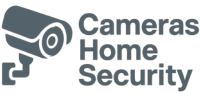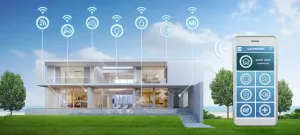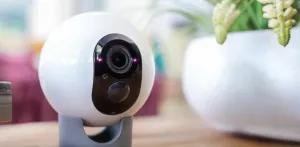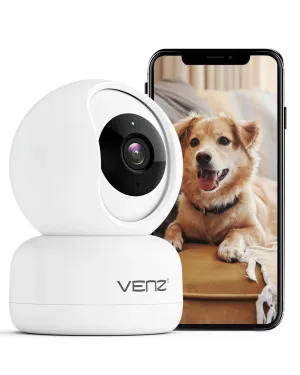Why Integrating Security Cameras into Your Smart Home Is a Game Changer
Remember the days when installing a security system meant wires everywhere, drilling holes in the walls, and having a chunky keypad that beeps every time you open the door? Well, my friends, those days are long gone. Now, imagine controlling every aspect of your home’s security with a few taps on your smartphone or by simply saying a command. Welcome to the era of smart homes with integrated security cameras—where convenience meets peace of mind.
I’ll admit, the first time I considered integrating security cameras into my smart home setup, I was a bit overwhelmed. There were so many options and technical terms—I felt like I needed a degree in tech-speak just to make an informed decision! But after diving deep into the subject, not only have I outfitted my home like a mini Fort Knox, but I’ve also learned a ton about how these systems work together to keep us safe and simplify our lives.
Choosing the Best Security Cameras for Your Smart Home
Choosing the right kind of security cameras for your smart home is like selecting the perfect topping for your frozen yogurt. It's all about what suits your personal taste—or in this case, your specific security needs and technical preferences.
- Indoor vs. Outdoor: First things first, determine where you need surveillance. Indoor cameras are great for monitoring interiors (here’s a breakdown), whereas outdoor models are built to weather the elements.
- Resolution and Field of View: If you want sharp images day or night, consider a camera with solid night vision capabilities.
- Connectivity: This is crucial. Ensure that the cameras you choose can seamlessly integrate with your existing smart home ecosystem—be it Google Home, Alexa, or any other platform.
- Storage Options: Cloud or local storage? This can affect how you access your recordings. Cloud storage usually comes with a subscription fee, but allows for easier access from anywhere, whereas local storage avoids ongoing costs but requires physical handling.
During my setup, I opted for an outdoor camera with night vision. I remember the first night I watched a live feed on my phone, marveling at how clear everything was in black and white—it was like watching a noir film starring the neighborhood’s stray cats!
Integration and Installation: Easier Than You Think
You might be picturing a weekend tangled in cables, but most modern security cameras for smart homes are surprisingly user-friendly. Many offer wireless connectivity and app-guided setup. Honestly, the hardest part was deciding on the best placement to cover all angles.
Many products offer wireless connectivity and straightforward, app-guided installation processes. I spent one Saturday afternoon setting mine up, and believe me, it was no more complicated than assembling a piece of IKEA furniture. The hardest part was deciding where to position the cameras to cover all the angles without being too intrusive.
Once installed, integrating these cameras with your smart home hub is generally a smooth affair. It usually involves downloading an app, creating an account, and then syncing everything through your Wi-Fi network. After I had everything hooked up, I had a bit of fun testing voice commands and adjusting settings right from my couch—it felt like having superpowers!
The Magic of Automation and Real-time Alerts
The real beauty of integrating security cameras with your smart home system lies in the automation and the real-time alerts. You can set up your system to notify you about any unusual activity immediately, no matter where you are in the world. (goldylocksinc.com)
One time, while I was on vacation, my phone buzzed with a notification from my home security app. At first, my heart skipped a beat, but then I saw the live feed showing my neighbor’s dog having a field day in my yard—false alarm, but good to know the system worked!
Alongside security, the integration also allows for some interesting interactions. For instance, you can have lights turn on automatically if motion is detected or have your coffee maker start brewing when your morning alarm goes off. The possibilities are practically endless. (camcamptech.com)
Privacy Matters: Keeping Your Home Secure and Your Data Safe
In the rush to smarten up our homes, it's vital not to forget about cyber security. With cameras and IoT devices interconnected, vulnerabilities can be exploited if we're not careful.
Ensure that all your devices, especially security cameras, are using up-to-date firmware. Also, robust password practices (think unique, long, and a mix of characters) and two-factor authentication can go a long way in protecting your privacy. Perhaps, adopt a 'privacy by design' approach by only choosing cameras from reputable companies that prioritize user privacy and data security. (architecturaldigest.com)
After beefing up my cyber security measures, I felt a lot more comfortable with my high-tech watchguards. It’s one thing to keep the bad guys out, and quite another to ensure that personal data stays safe.
Smart Home Security: A Wise Investment for Peace of Mind
Integrating security cameras with your smart home isn’t just about being tech-savvy; it’s fundamentally about enhancing your home’s security with the added perks of convenience and control. From deterrence against potential intruders to checking in on your pets while at work, the benefits are tangible.
Do some homework, figure out your needs, and invest in a system that enriches your quality of life while keeping you safe. Isn't it wonderful living in the future?
I’d love to hear about your experiences or any tips you might have when it comes to integrating smart tech in your homes. Meanwhile, remember to keep both your physical and digital domains secure. Here’s to smart living!





